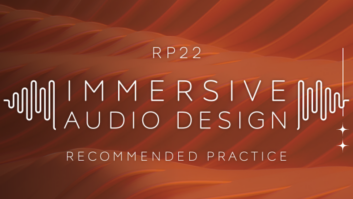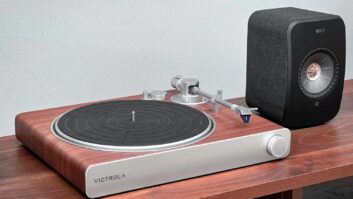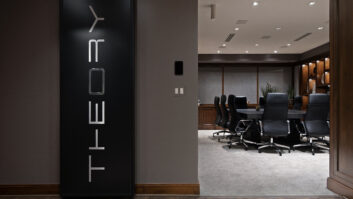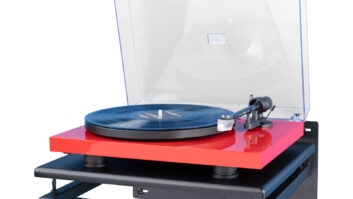TWICE: Why hasn’t the excitement in flat-panel TV carried over to component audio? Has the form factor not followed suit fast enough? Or has the iPod simply overshadowed the category?
Judy Quye,Tweeter: Certainly the iPod is at the forefront of audio right now. It’s an exciting new portable technology. But installing new technology in your home is also becoming an important part of the audio experience. Certainly at Tweeter, the audio piece that’s growing is the installation portion that goes with in-wall and distributed audio through your home. We’re seeing some exciting things happen in audio, but it’s mostly related to the home installation business.
Jim Ristow, Home Entertainment Source: We actually saw our component sales go up last year. With the price erosion beginning on flat-panel display technology, we’re finding that our specialty A/V dealers are now able to attach audio. We’re starting to see audio come back fairly strong because the consumer is now able to devote more money to sound. I think we’re going to see that trend transition into the other channels very shortly also.
Tony Weiss,CompUSA: In many instances, purchases of flat panel televisions represent upgrades. But the consumer doesn’t perceive as much value in audio today to make a decision to upgrade those products as well. If you look at the new video technology, there’s a dramatic change in going from a tube or CRT projection TV to an LCD or plasma television in terms of what it offers in stylishness and other features.
In audio products, other than technologies like the iPod, there’s not a lot that’s tremendously different to offer a compelling reason for the consumer to upgrade, unless they’re more into their audio product than the traditional consumer who’s now only involved in flat-panel television.
Ross Rubin,NPD Techworld: We talk about the iPod as the modern day Walkman, but the usage is quite different. The fact that you can put a significant percentage of your music collection on that device explains why a lot of the docking accessories have been doing so well. People are moving it from place to place, enjoying their music nomadically.
We are starting to see the same thing with satellite radio and will start to see it with DVD as well, as those products become easier to move into multiple environments. It’s a challenge how we categorize and track these things and how you guys merchandize them. The challenge is to make consumers increasingly aware of the versatility of what were previously thought of as mobile products. They’re starting to blur those categories.
Frank Sadowski,Amazon.com: That’s a good point. There’s little doubt that people are using their iPods as their music repository for their home system.
Amazon, incidentally, had a growth season in audio overall last quarter, and somewhat of a resurgence in traditional home audio sales.
I’m not sure I agree with Tony’s upgrade comment. Look at unit sales of home television, even subtracting small commodity CRT sets. Compare the unit sales of TVs 32 inches and higher, vs. the total unit sales of anything in audio that could be reasonably called home theater, and the fact is that the vast majority of American households have decided not to attach audio to their video experience.
That to me, coming out of the audio business career-wise, has always been a huge mystery. I’ve never met anyone who’s sat in front of a quality audio system who would say, “That doesn’t sound a whole lot better.” Everyone says, “Wow, that sounds great.”
Assuming that people like the way it sounds and they want it, it leads me to the conclusion that the majority of people have decided that that’s not a good value for what we’re asking for that experience. When we see what is selling now in audio, the industry suppliers have been smart enough to develop good sounding low-priced home theater systems. If we look at NPD data, that’s what’s selling. The vast majority of customers may want to spend $3,000 for a big screen TV — that represents a value to them — but spending $1,200 to $1,500 to add on the audio experience is not a value and they won’t do it. But maybe they will at $299.
That’s O.K. We have to find out what the consumers want. For way too long, we’ve been saying, “You have to want this.” Guess what? They don’t have to want it. The data is there that the vast majority of people have said, “No thanks.”
Rubin: When they hear the audio output, they appreciate it, but are intimidated by the set-up. It goes back to some of those aesthetic issues we mentioned. We’re starting to see more manufacturers introduce wireless systems.
Sadowski: And flat speakers to go with flat TVs.
Doug Moore,Circuit City: At Circuit City, we’re looking at the audio business in 2005 as an opportunity. Frank makes a lot of great points about what has happened in the first couple of years of new video technology. We don’t know the answer. We were rather quick to provide low-price home-theater-in-a-box. The industry has helped satisfy that need.
But there’s some real opportunity at a different place. If people are going to put $2,000 to $4,000 into essentially a video monitor, then source and sound — meaning how and where they get their content and how they listen to and watch it — is something we’re going to work on fixing. We’ve got 600 places to go through that with folks. We’re going to figure out how to do better in that area.
TWICE: Has the consumer responded to the better HTiBs?
Moore: It’s very situational to which store we’re talking about. It matters as to what we do as operators, in addition to merchants. We’ve got work to do in both those areas in audio and we intend to do more of each in how we buy and sell that product.
TWICE: Do you agree with Jim, that as flat- panel prices continue to compress it will free up video dollars that consumers could now use to upgrade their audio systems?
Moore: I don’t know.
Quye: In retail, we have not been successful in showing the full solution experience, from the entry level point all the way up to the high-end home theater. Probably we’ve done better in the high-end theater rooms than we have in the entry-level experience. When you put the HD content together with a great sound experience and you have a nice, deliverable package for a customer in the $5,000 range with a flat-panel display, they get very excited. The next question then becomes, “How do you bring them to life in my home?”
I don’t know that the consumers are not voting that that’s a value for them. It’s an education and understanding opportunity. It’s the industry’s opportunity to help the consumer understand how they get it in their home.
TWICE: How much of that responsibility is the retailer’s vs. the vendor’s?
Quye: We work together. We have the consumer in our stores in front of the technology, so we have the window of opportunity from a relationship and demonstration perspective. The vendor community is what brings it to life.
Moore: They’re creating great product. Wireless enables a lot of technology there potentially. Miniaturization allows for things like flat and small speakers to really deliver. There’s tricking the system through software, which allows for some virtual surround sound. This is probably more of an operator opportunity than a vendor opportunity.
Rubin: In a lot of the home audio categories, we saw some slowdowns related to the saturation of the CD player. In home-theater-in-a-box, we’re starting to see some of that with the DVD as well, since that’s in so many households. Perhaps as we move to the high definition formats there’s a chance to revitalize some of the audio sales with integrated high-def units. That may be where the next wave of consumers upgrade their A/V equipment.
Quye: With the amount of digital music that’s being downloaded in the world, right now primarily into personal computers and iPods, and with the advent of the Media Center PC and digital hardware that would bring music into your home, we’re looking at a whole new beginning for the audio experience going forward.
Ristow: Exactly. The last few years we kept hearing, “Whoa, audio is dying.” The numbers keep going down, but in reality, is it really dying or has it changed? It’s changed. Now how quickly can the traditional suppliers and we as traditional merchants adapt to give the best possible experience to the consumer?
Moore:Somewhere between where audio was — the old mix-and-match sound room we all wandered in and out of in the last 20 years — and the current portable audio players, there’s an answer that we just haven’t come to yet. The great news about MP3 and iPods is that people are carrying music with them everywhere because they can. There’s something there that’s bigger than life. We need to work on it.
TWICE: Speaking of portable audio, what kind of opportunity does satellite and high definition radio offer?
Moore:It certainly was a bright spot during the fall season. As Judy mentioned, satellite radio was a massive win for anybody who had it. It sold everywhere — on our Web site, I’m sure on Frank’s, and in every one of the outlets represented here — and we sold almost as much as we could get our hands on. It was at all levels of consumer price points, and every one of those price points delivered what it promises: portable audio when I want it. Getting content out of thin air without a lot of effort is pretty neat. Satellite radio and the MP3 are related activities. So stay tuned; it’s going to be fun.
Rubin: We’re starting to see products that combine those two technologies. They’re very complementary: you can enjoy the library you already own and be exposed to new music you might enjoy.
TWICE: Yes. Suppliers can now XM-enable their devices for a buck a unit.
Rubin: The success of satellite radio as opposed to some of the other subscription-based products we’ve seen is that consumers understand, from satellite television and cable, the model of paying for selection and quality of content. It’s a straightforward value proposition for them.
TWICE: And is there also a market for iBiquity’s HD radio?
Rubin: Yes. Just like with satellite radio, the car manufacturers will play a huge roll in its adoption. It presents some opportunities for established broadcasters. We’ll see to what extent they take advantage of it. Right now, it’s going to be a slower ramp up curve because there’s no subscription and you can’t subsidize the hardware the way an XM or Sirius can. But there’s hope for the future of free radio, even without Howard Stern.













